Repairing a Minolta X-370 Light Leak
Support this website by purchasing prints of my photographs! Check them out here.I recently inherited a Minolta X-370 film camera. After that I took it out and shot a few rolls of film. It was such a fun experience that I bought a second one on eBay to spruce up and give to a friend. But, after shooting a roll of film on the camera from eBay, it was obvious that something was wrong.
This article goes over what I did to fix the light seals for the camera. Note that while this guide was written with my Minolta X-370 in mind, the same steps should apply to other film cameras as well.
Diagnosis
A bunch of the photos had bright areas on them. Here's what a particularly bad photo looked like:

This is something called light leak. Often, if the light leak is bright white like this one, it means that the light leak is coming from the complex front shutter assembly of the camera. Fixing this is something beyond my skill level and probably requires a professional. Light coming from the back of the camera is often more of a red color. This has something to do with the layers of film.
At this point I was worried that the camera might be junk. However, there is another way to tell if the light is coming from the front or the back of the camera: by checking the negatives. If the light is entirely contained within the photo area of the negative and butts up with the edges then it is coming from the from shutter assembly. Such light needs to go through the lens or otherwise through the shutter opening. But if the light spills into the tracks outside of the photo area of the negative then the light is probably coming from the back of the camera. Light from the back is free to contact more areas of the film.
Luckily this appeared to be the case. In this negative you can see that the vertical "bright" area of the photo (the dark splotch since the colors are inverted) extends past the photo area and into the tracks:
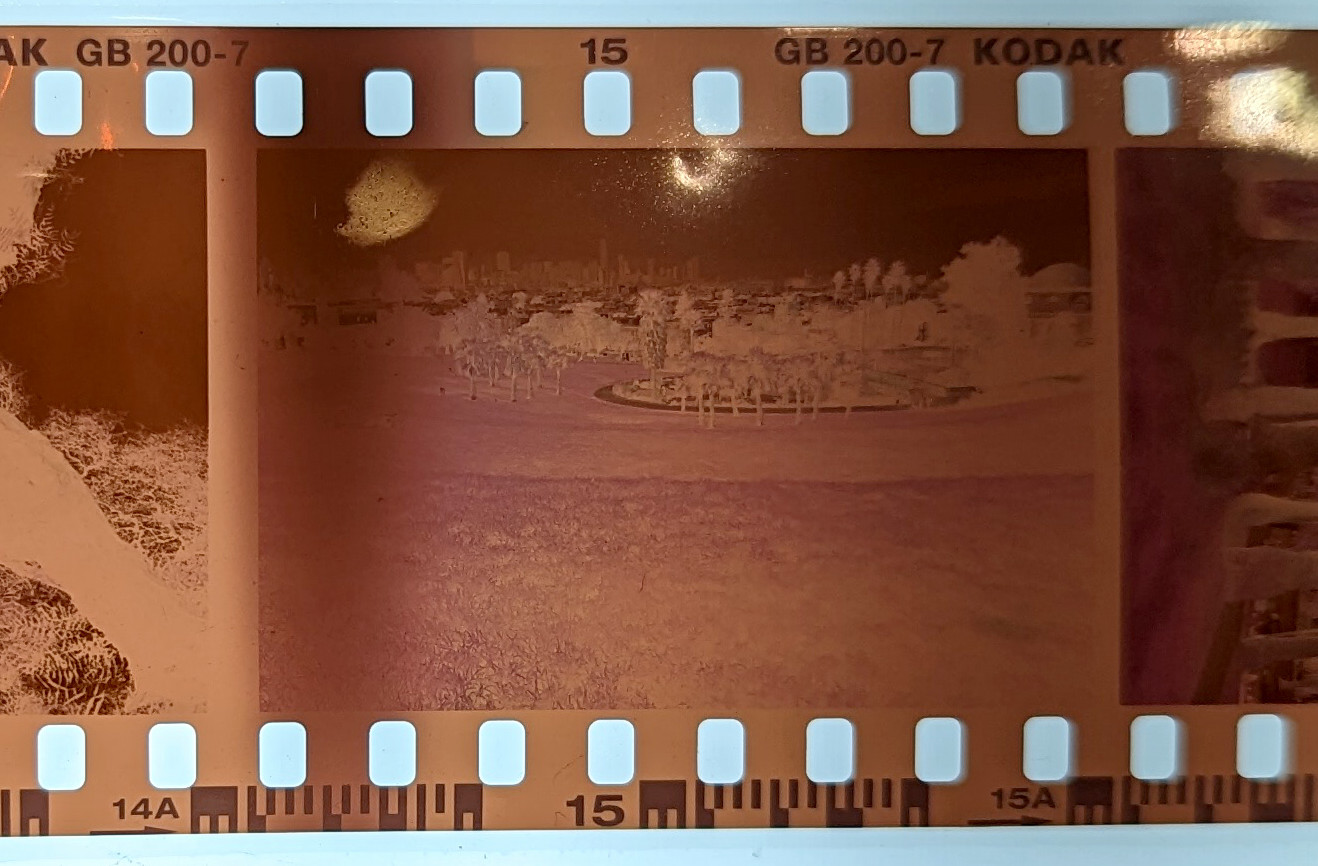
This was a great sign since it meant I could repair the camera, though things were a bit confusing since the light leak was white instead of red. Another hint was that photos following an outdoor photo were more likely to have the light leak, and that the light leak would sometimes fall "between" two adjacent photos, affecting the left of one and the right of another. If the light leak was from the front shutter assembly then it would be likely that light leaks would be isolated to individual photos.
Crumbly Foam
Inside of the camera the foam was a mess. Within the hinge a large chunk was missing in the middle. Due to the vertical nature of the light leaks in my camera it suggested that the guilty light seal was from a vertical part of the camera. Therefore the vertical hinge was most likely the culprit.
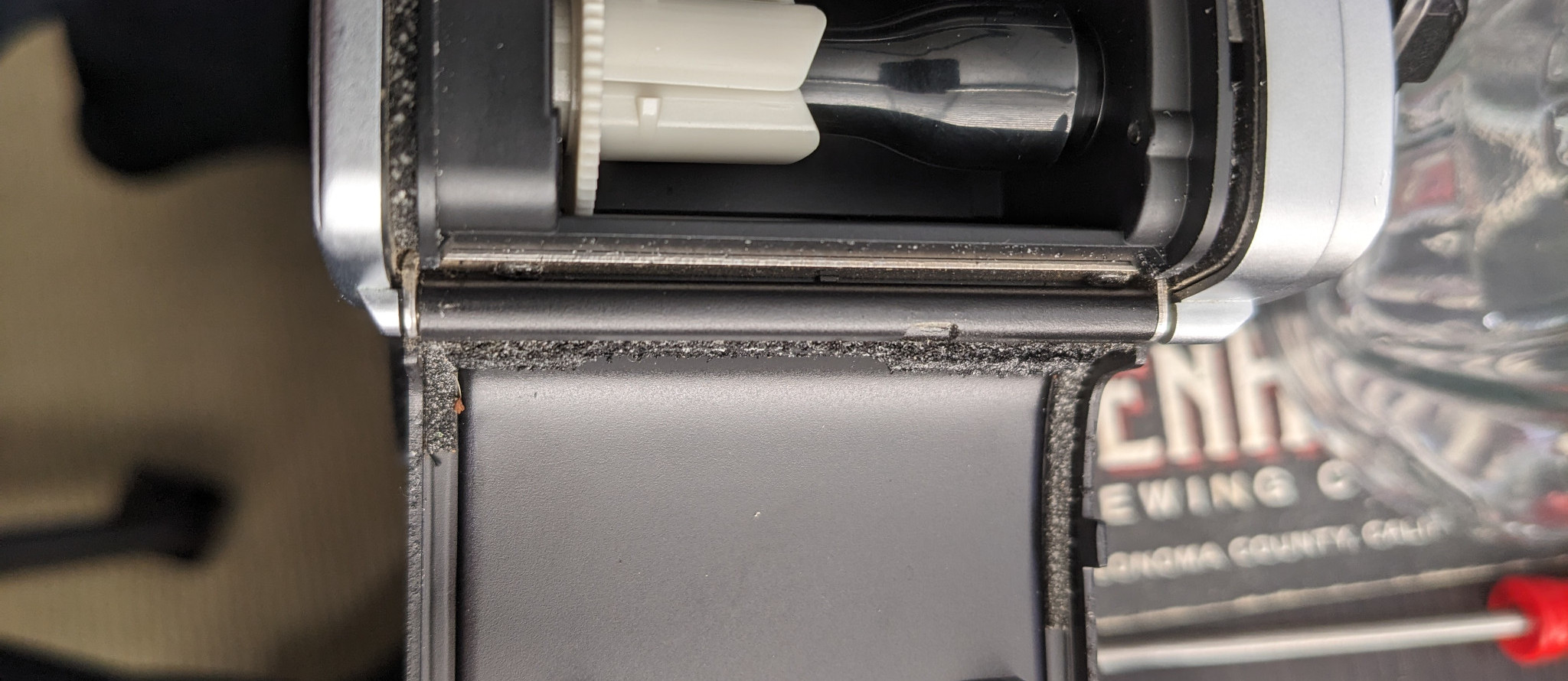
While not as bad the remaining foam around the top and bottom of the camera also looked a bit messy. In my case it probably wasn't causing any problems at the time.
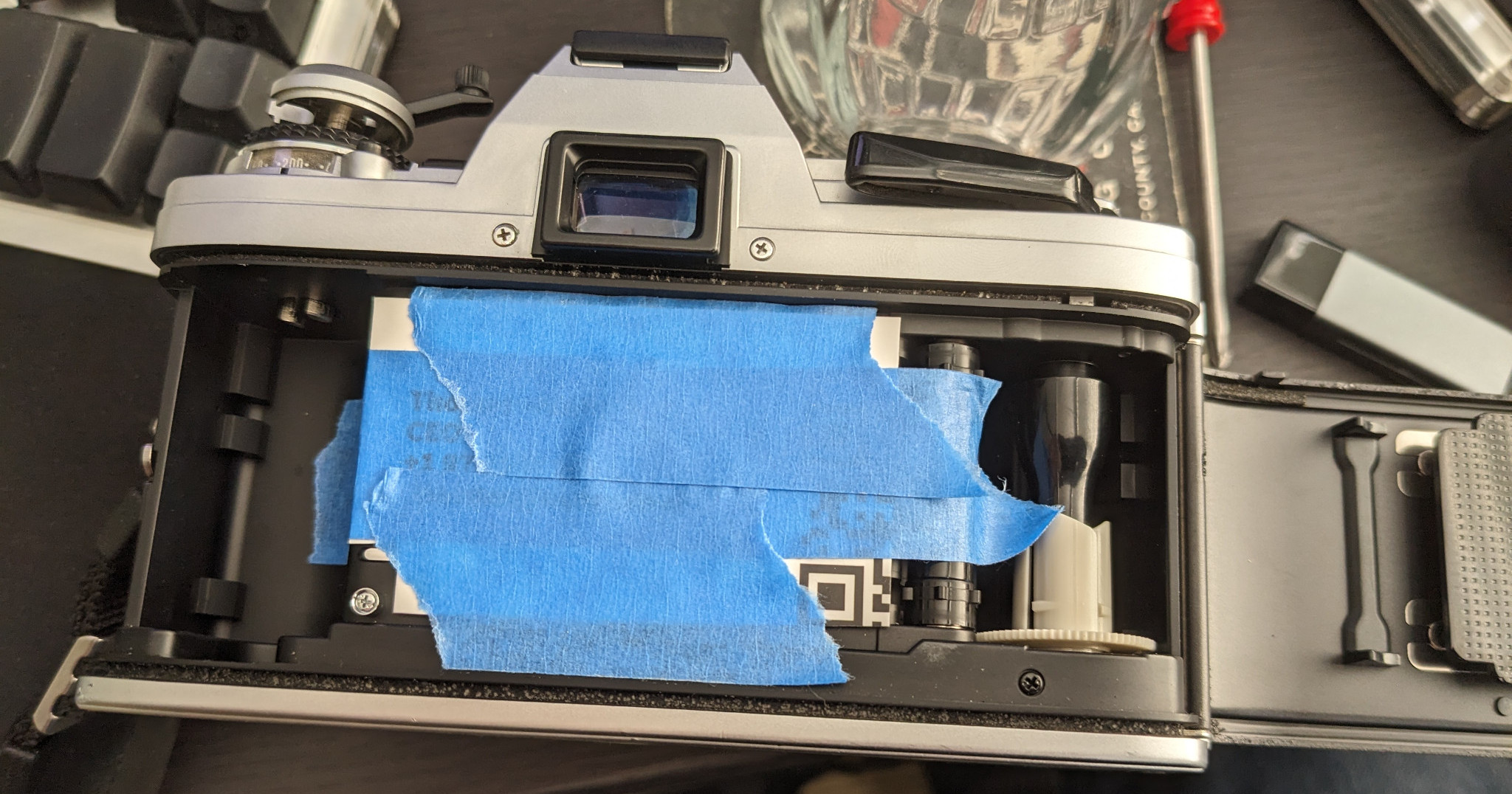
Even though the top and bottom foam wasn't causing issues I still wanted to replace them since I was already going in and fixing seals. Truth be told, the top and the bottom seals require the most effort to fix.
Repair Supplies
You'll need the following supplies to pull off this repair:
- Light Seal Foam
- Xacto Blade
- Metal Ruler
- Cutting Board
- Q-Tips
- Rubbing Alcohol
- Residue-free tape
- Thick paper
- Needle nose pliers
Also, take photos of all of the existing foam so that you remember to replace it all.
Repair
First, if you didn't notice in the previous photo, you'll want to completely cover the shutter area of the camera. Specifically, we're about to scrape a bunch of gunk from the inside of the camera. This gunk is broken down foam and is very sticky, almost like an oil. If any of this gets onto the shutter curtain then your camera is going to be ruined. You also don't want any sticky tape residue inside of the camera, especially on the curtain. For that reason I put a cut up business card in front of the shutter, and then used painters tape to hold it in place.
Next, it's time to remove the old foam light seals. Take a Q-Tip, dip it in rubbing alcohol, and go over the seals. The ancient foam should immediately break down into black sticky goo.
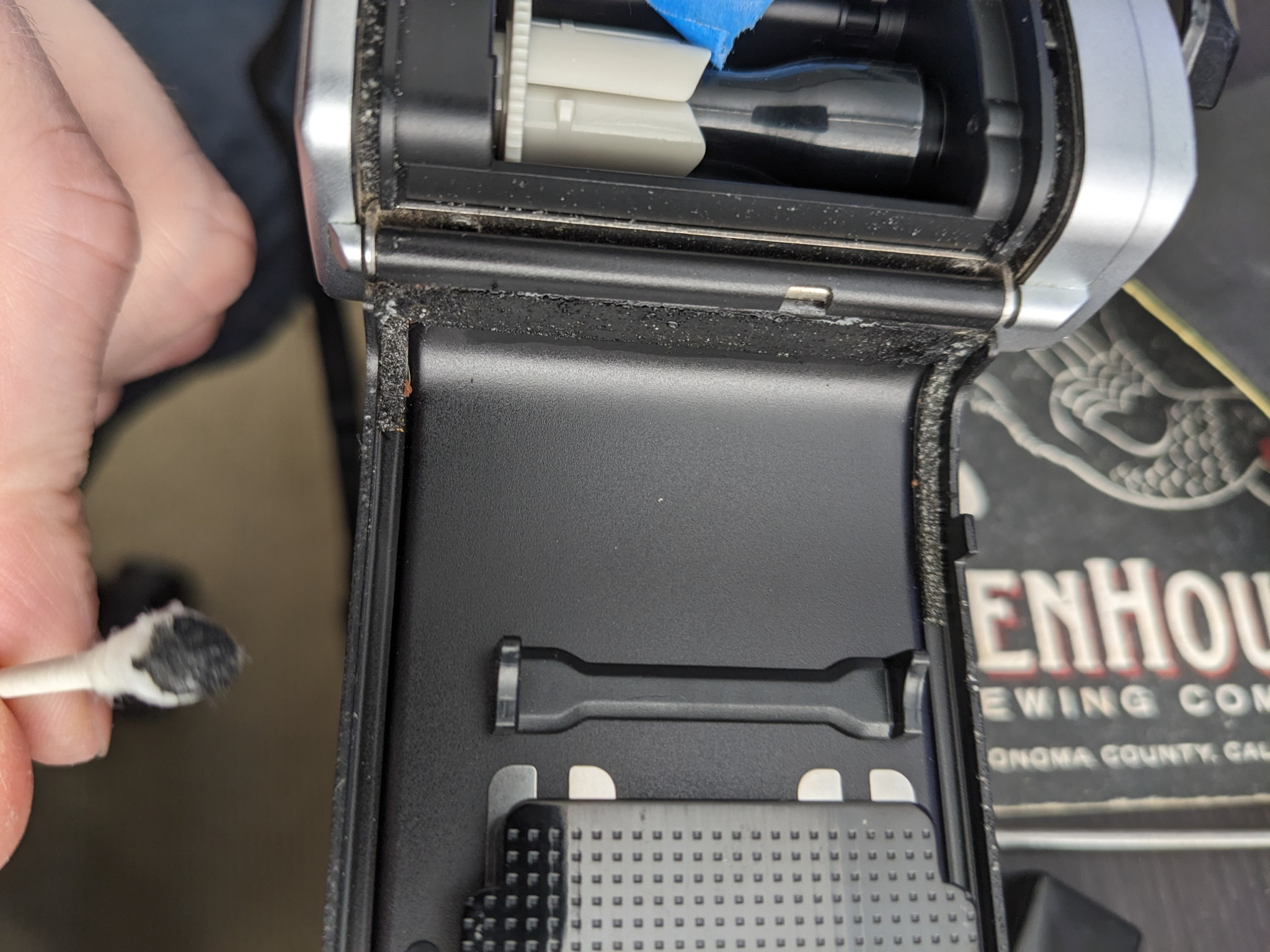
Keep going over it and pulling at it and eventually the sticky double-sided tape backing of the foam peels away from the camera.
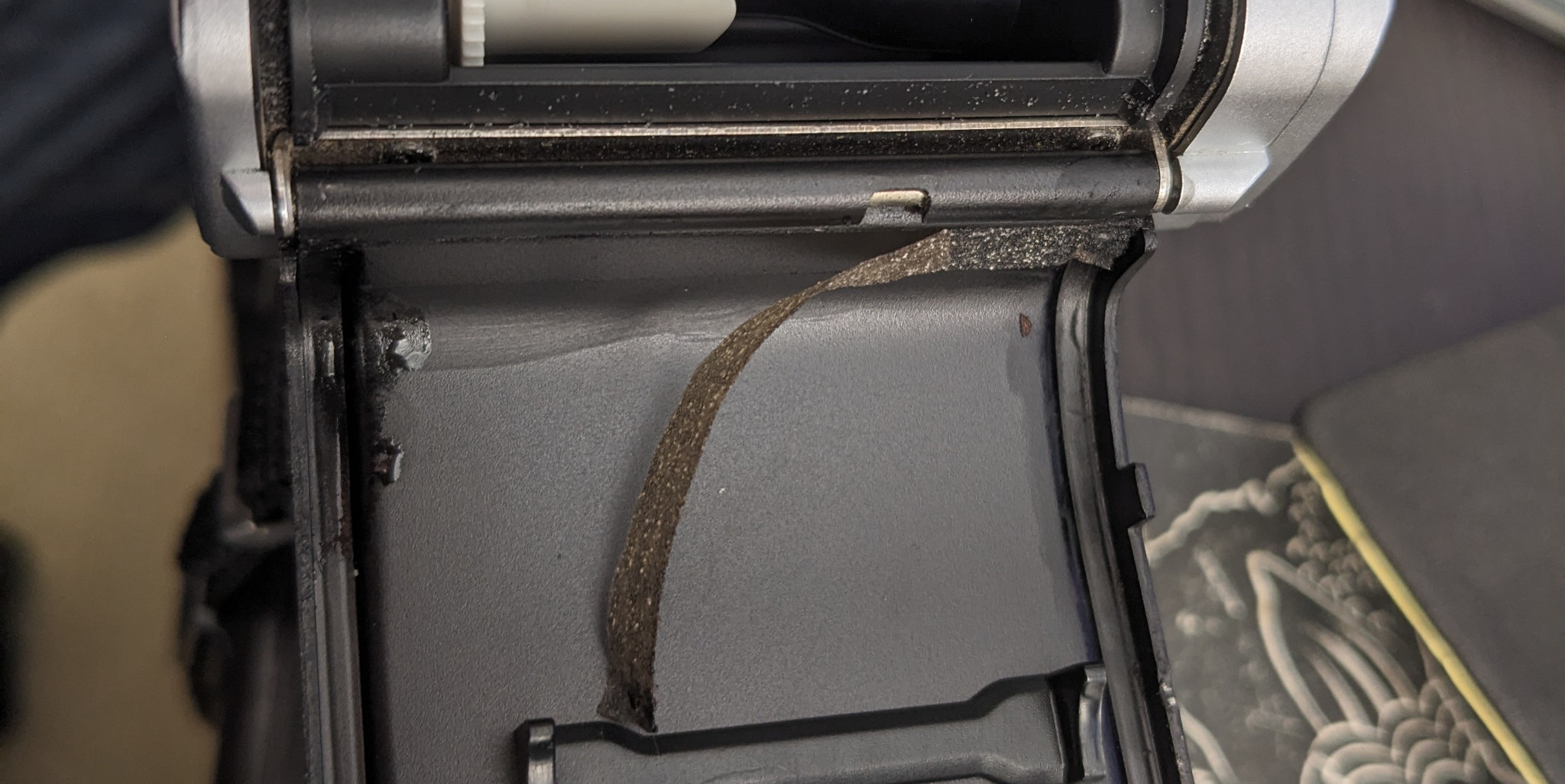
If you have a pair of needle nose pliers it will make the job a lot easier. This is especially true of the long top and bottom strips.
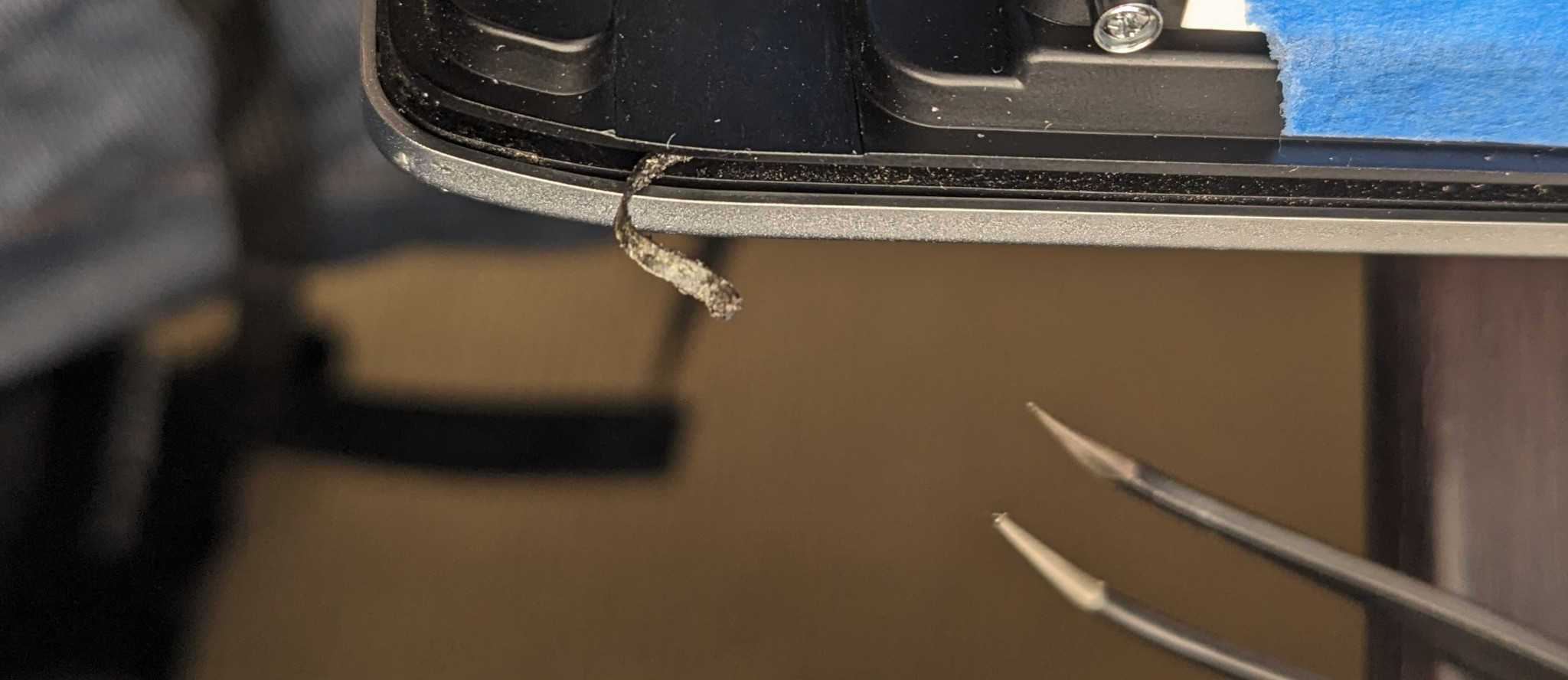
Once you have removed some of the old foam you're free to add new foam. You can either remove all of the old foam, then replace it with new foam, or replace one piece at a time. Going one at a time is convenient because it helps you keep track of where the foam went and how big of a piece you need.
To replace the foam take a metal ruler and hold it on top of the new foam, applying force downward onto a cutting board. Eyeball the width you need based on the old foam you just removed and cut a slice of foam. The paper backing on the foam can be hard to cut so you'll probably need to apply a lot of force. For the long top and bottom strips you'll probably need the foam to be thinner than you first guess.
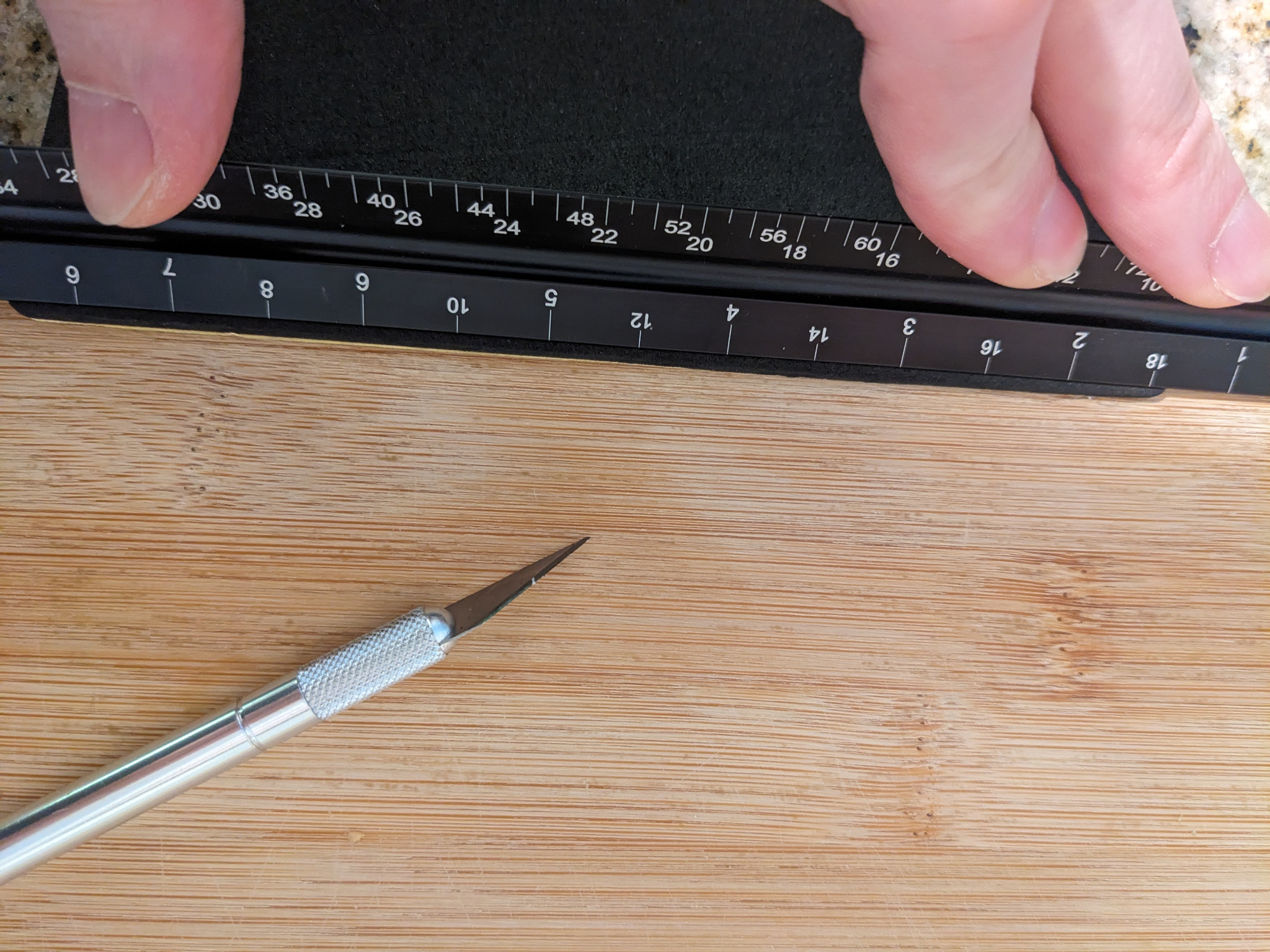
Shoving the foam in between the gaps and keeping the tape from sticking to the sides is a real pain. I made use of the pliers to help align things. It feels like playing a game of operation. If you have tooth picks you might find that those help as well. Note that you'll probably need to cut a few pieces and try a few times to get it to work.
It's also worth noting that the top right side of the camera back has a small gap in the foam beneath the film advance lever. This gap should be maintained so make sure the lengths of foam that you cut don't overlap this gap.
Success
Once the process is complete you'll have a camera with clean foam light seals. They might feel a little thick and the camera door will probably require more force to close than you're used to. Here's what the hinge area looks like in my camera after the repair:
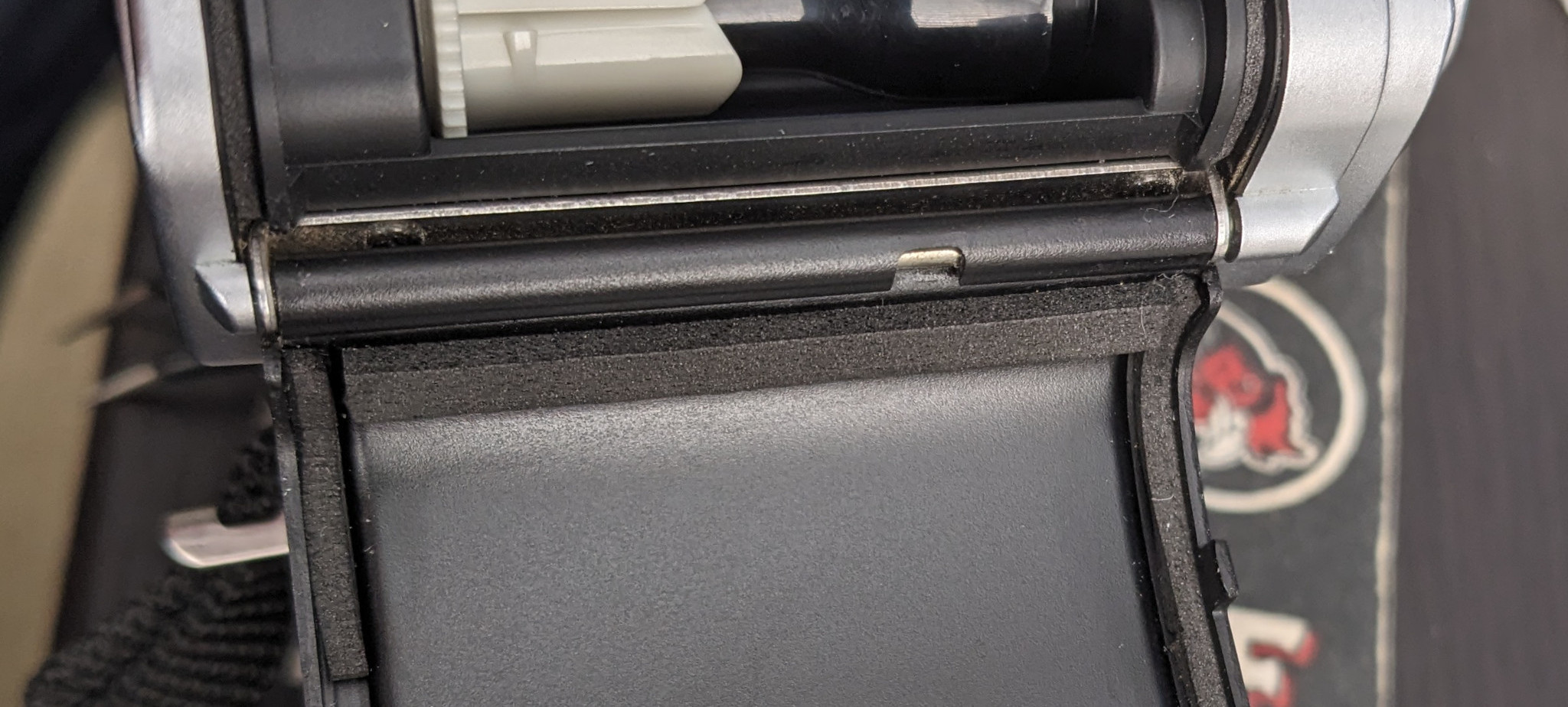
You'll also be left with a big pile of trash but that's another story.
Here's what the longer strips of foam on the top and bottom look like in my camera:
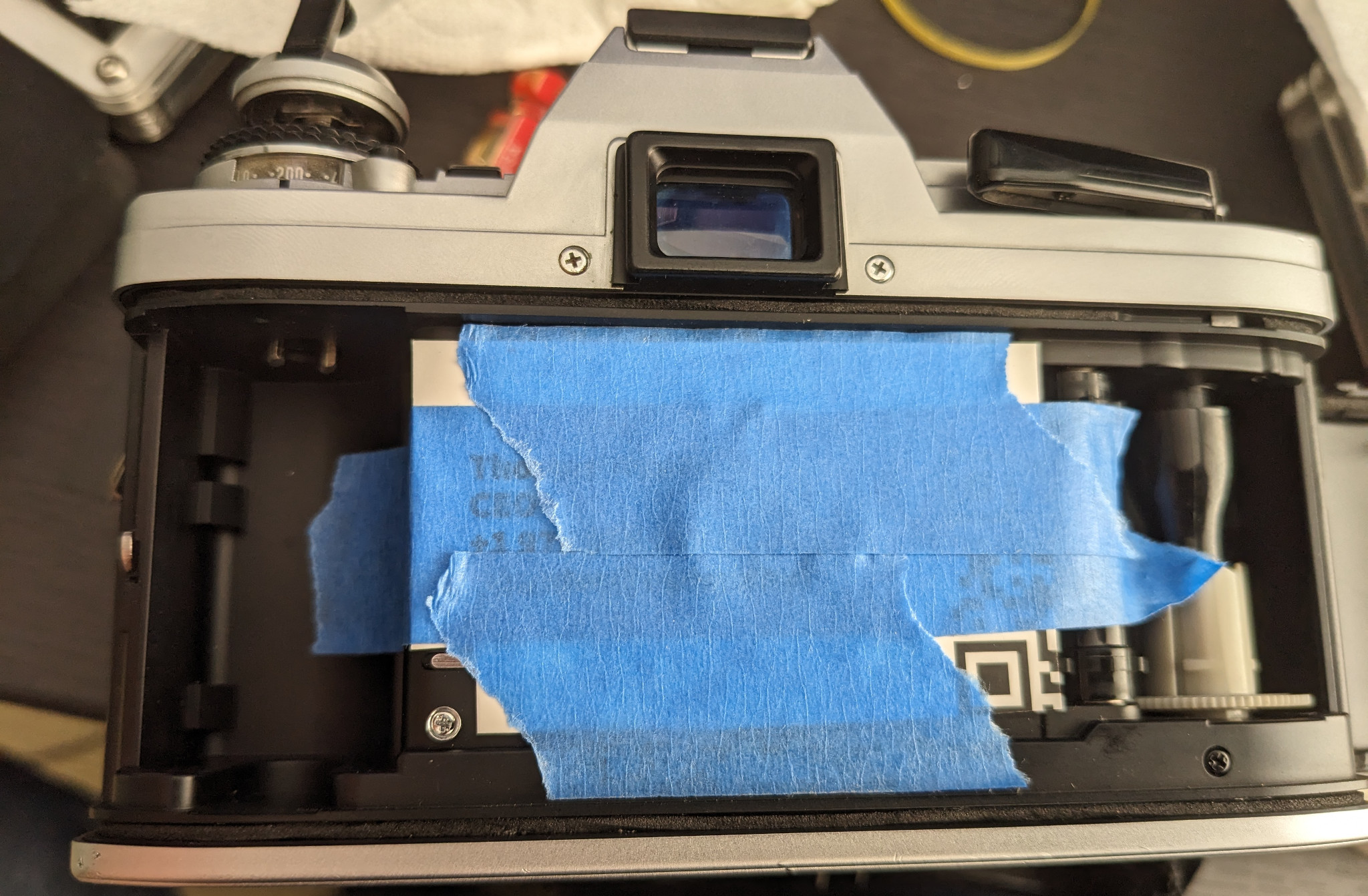
Note that they're a little bumpy and imperfect. But with the way the metal panels press into the foam I don't think it will be a problem.
I would recommend opening and closing the camera back several times. You want to make sure that none of the foam on the back of the camera door is going to get stuck to the front of the camera. This can happen if the foam gets twisted around and the tape backing gets exposed.
Once you've opened and closed the camera a few times you can leave it shut for a couple days. Check on it once it's had some time to set up just to make sure it all still looks good. If any of the foam came loose it's better to fix in now while still fresh in your mind instead of while you're in the field taking photos.